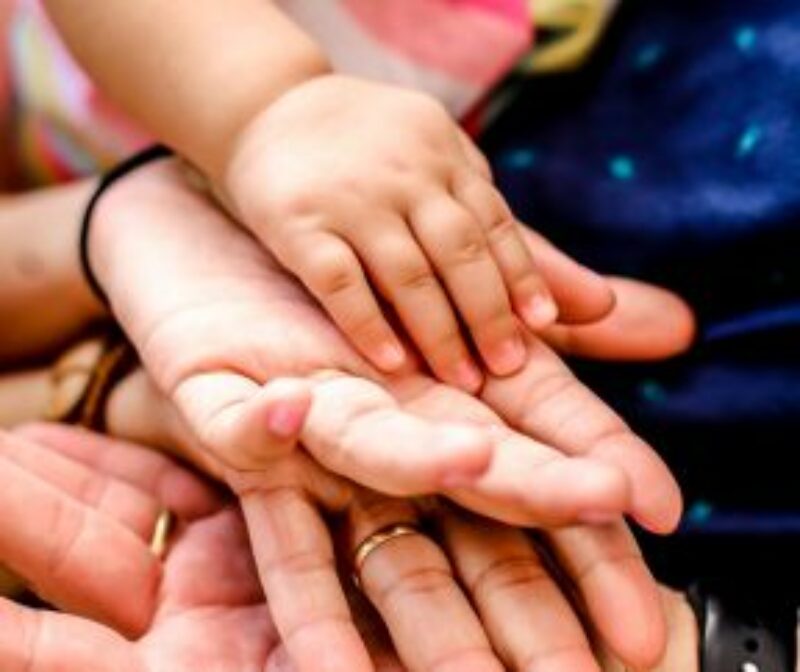Photo by: Tess Wilcox on Unsplash
Day 4 – “It still doesn’t feel real.” The gravity of the tragic helicopter crash that killed nine impactful humans on January 26, 2020 hasn’t quite hit me at a processable level. “But guess what?” I tell myself. “Remember that this is normal. Feeling numb is part of the process.” The initial phase of shock and disbelief is part of tragedy. It is part of grief. In this post, I will guide you through the intricacies of grief as it relates to your child and adolescent. Provided within will be digestible bites of information and tips, so you, too, can help facilitate the connection between disbelief and reality.
Grief 101
Grief comes in many forms. In fact, some sources state that there are as many as 13 types of grief. In the table below are some need to know definitions to the terminology you may be hearing about as you traverse the next stages of the healing process. Please note: this list is not exhaustive.
| TERM | DEFINITION |
|---|---|
| Grief | A normal process in response to lose. These are cognitive and behavioral reactions. |
| Mourning | A public expression or reaction to loss. |
| Bereavement | A state of having suffered a loss. |
| Complicated Grief (or Prolonged Grief) | A debilitating grief that lasts longer than 6 months. This is a disorder diagnosed by a professional. |
| Disenfranchised Grief | When culture, society, social groups, or support persons makes someone feel as though their loss or grief is insignificant or invalidated. |
| Cumulative Grief | Experiencing additional loss after an initial loss. |
| Traumatic Grief | Common grief responses to an uncommon event that is traumatic, distressing, frightening, unexpected, and horrifying. |
A Developmental Approach to Grief and Loss
As mentioned in Not All Superheros Wear Capes, Some Play Ball: How Tragedy Unites, how youth comprehend and react to loss is, in part, a function of their age and developmental stage. The table below provides guidelines. Please keep in mind that these are simply guidelines. Duration, intensity, and expression are dependent on so many contextual factors.
| AGE | CONCEPT OF DEATH | GRIEF RESPONSE | USEFUL TIP |
|---|---|---|---|
| Infant – 2 Years | Children of this age don’t have a grasp on the abstract concept of death. They do, however, sense the emotions of others around them. | Response is caregiver and environment dependent. If care is disrupted, possible responses are: irritability, consistent crying, changes in sleep and eating habits. | Maintaining continuity of care, consistency and awareness of the emotional climate of the home will help ease children of this age. |
| 2 – 5 Years (Preschool) | This age doesn’t comprehend what forever means. Death is seen as temporary or reversible. | This age responds to the emotions of those around them. Seeing a parent cry may trigger sadness and crying. Their present-oriented behaviors may produce intense, but brief spurts of emotional disruption. | Consistency in routine and nurturing, reassuring relationships are important at this age. Offer honest and direct answers to questions. Even at this age, avoid euphemisms. Use real language and say died or death, instead of “went to sleep for a long time.” |
| 5 – 8 Years (Early Childhood) | This age, too, can continue to think death is temporary. Magical thinking also has them thinking everything in their world is in their control. Some may draw inferences between two unrelated items, such as the toy they were holding or the clothes they were wearing when they heard the news. | Asking a lot of questions at this age is common. Expressions of grief come out in play more than words. It is also common to have no reaction at all. Common reactions as with preschoolers can be disruption in sleeping and eating, irritability, and a regression in behaviors as a means to attract more nurturance. | Use simple statements. Directly answer their questions. Avoid euphemisms. Allow for plenty of play and recreational activity. Keep routine. |
| 8 – 12 Years (Middle Childhood) | This age may be curious about death. They may want to know details and ask very pointed questions. Although this stage understands death is final, they may not connect that it is something that can happen to a family member or themselves. Toward the end of this stage, they have a more complete understanding of the consequences of death. | This age will start to be able to tap into more of their coping strategies. They may speak in terms of the emotions they are feeling, yet they may avoid them all together. They may also want to protect the adults in their life, so they likely won’t be the ones to bring up the topic to ease your distress. | Be as open as possible. Create opportunities to talk. Being seen and heard is very important for this stage, yet at the same time they may also want to fit in with their peers and can adopt the responses of those around them. |
| 12 – 18 Years (Adolescence) | This age has an adult understanding of death: that death is not irreversible, that it is caused by the ceasing of organ functioning, and it is universal – all things die. | Grief at this stage may look much like an adult’s, but they have fewer coping mechanisms. They may feel too vulnerable to talk about the emotional pain they feel. | Encourage them to talk about death. Acknowledge that their thoughts and feelings matter to you. Validate what they’re feeling and do not minimize. Create opportunities to talk one on one with them. Encourage other outlets such as exercise and expression through art. |
Grief is also demonstrated in various physical, behavioral, and cognitive indicators. These are all normal reactions and part of the natural healing process. These symptoms may not surface immediately and some symptoms may last for a few weeks or longer.
| PHYSICAL | EMOTIONAL | COGNITIVE |
|---|---|---|
| – Accident prone – Alcohol or drug abuse – Appetite changes – Stomach or digestive issues – Dizziness – Hives – Insomnia – Low energy – Stomachaches – Weight gain or loss |
– Agitation – Anger – Overly compliant – Depression – Guilt – Irritability – Envy – Loss of self-esteem – Moodiness – Nightmares – Restlessness – Preoccupation with the past – Sadness – Self-critical – Thoughts of death or suicide – Avoidance or excessive need for intimate relationships |
– Confusion – Disbelief – Forgetfulness – Inability to concentrate – Memory loss – Over-achievement |
When to Seek Professional Help
Grief is non-linear. Gone are the days when grief is referred to in “stages.” Keep the opportunities open to talk to your youth and let them tell you what their feelings of grief consist of. Let them be the expert in what they are feeling. Many adults will ask, “When should I get my child professional help?” or “If they are not back to ‘normal’ in a couple weeks, should I worry?” As a therapist who has worked with countless individuals and families through their grief processes, my answer is, “It depends.” If you notice that your youth is very distressed, unable to carry on with daily processes, and symptoms don’t appear to be getting better, seeking help from a professional, such as a therapist, may be a good idea. Therapy can also be another outlet for youth to learn language to express difficult emotions and to strengthen their repertoire of coping skills. You know your youth the best. It is always a good idea to consult with a professional if you think they are not improving.
Remember
Grief after a tragic loss takes many forms. Educate yourself on the various shades of normalcy. Be a companion with your youth through their grieving process. Be patient, be kind, be compassionate, and always lead with love even if you feel fear.
References
1. Boss, P. (2002). Family stress management: A contextual approach Thousand Oaks, CA: SAGE Publications, Inc.
2. Wright, L. (2017). Suffering and spirituality: The path to illness healing Calgary, Canada: 4th Floor Press
3. Walsh, F. (2016). Strengthening family resilience (3rd ed.). Guilford Press.
4. Fitzgerald, H. (1992) . The grieving child New York, NY: Touchstone Publishing.
5. Doka, K. J., Tucci, A. S., & Hospice Foundation of America. (2011). Beyond Kübler-Ross: New perspectives on death, dying and grief. Washington, DC: Hospice Foundation of America.
Continue Exploring

Youth
Kids and Community (Part 3): How Can We Keep Kids in Church?
How do we keep young people engaged in church? This is part 3 of a 3-part series.

Youth
Kids and Community (Part 2): Adolescents and the Value of Loving Relationships that Display a Loving God
Why do kids need a community that models love, and what does emotional safety have to do with it. Part 2 of a 3-part series.

Youth
Kids and Community (Part 1): How to Find the Right One for Your Kids to Thrive
How do you find a community to support your family? What kinds of support help families grow spiritually healthy and thrive.
